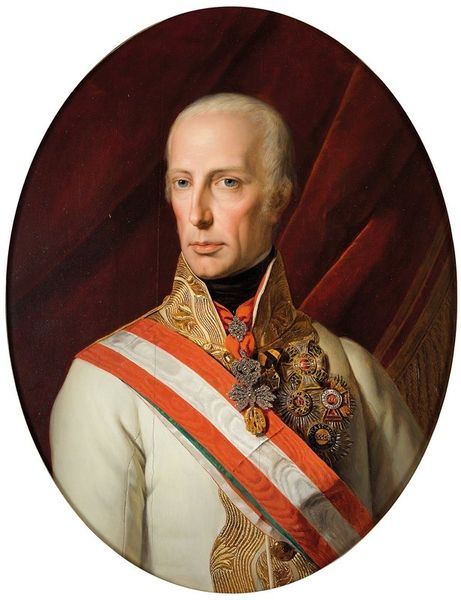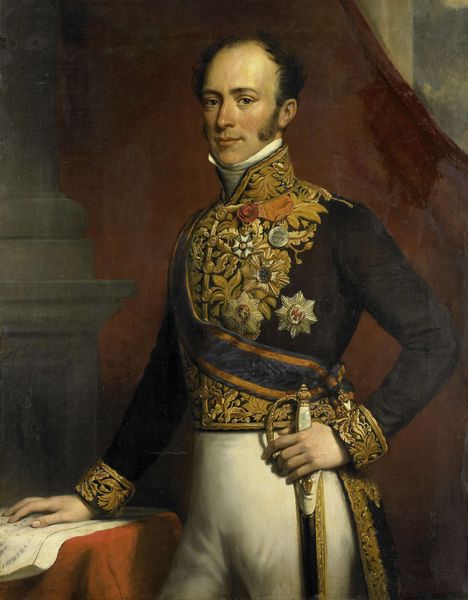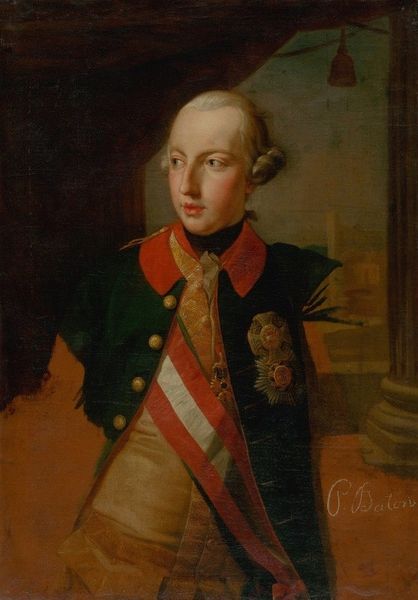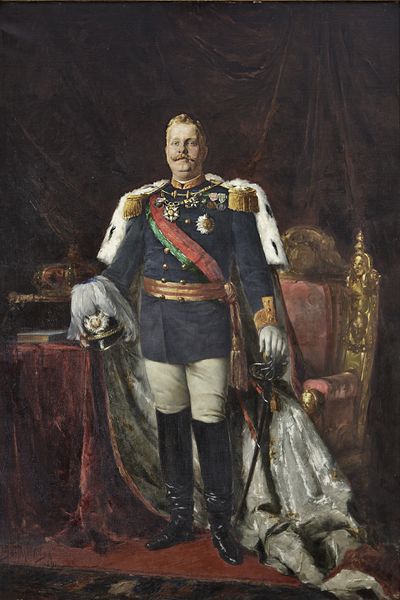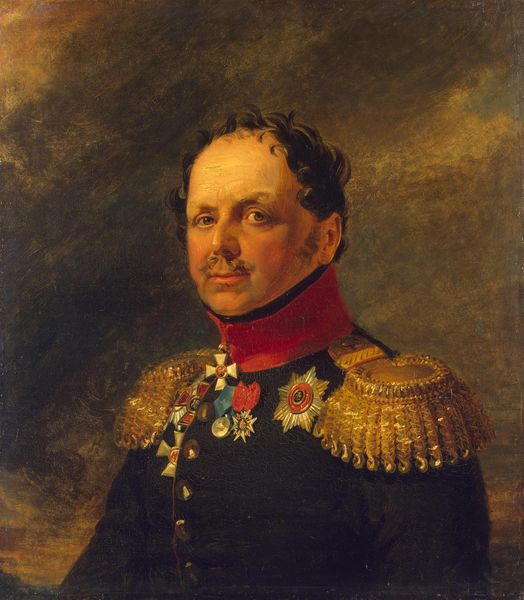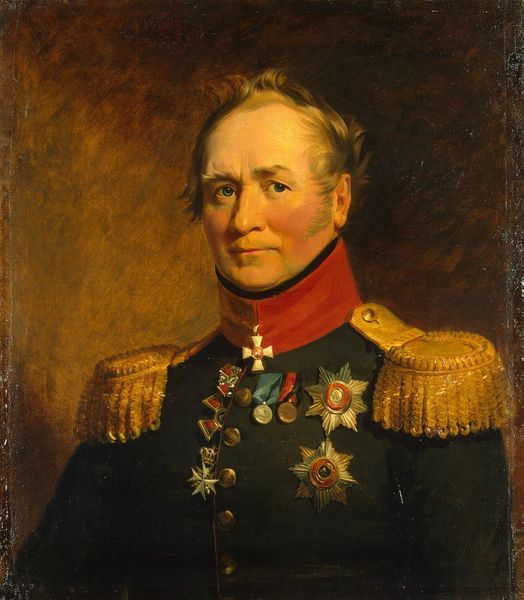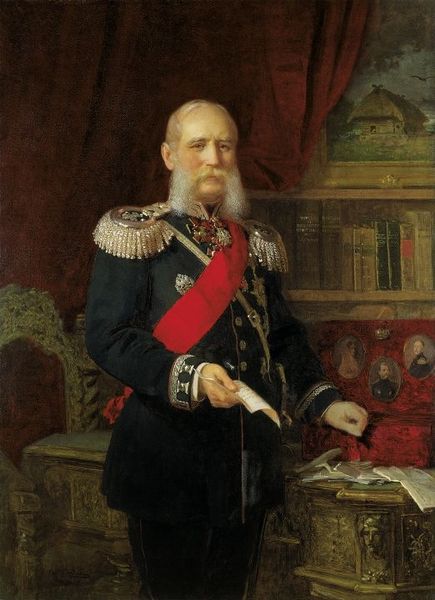
painting, oil-paint
#
portrait
#
figurative
#
painting
#
oil-paint
#
figuration
#
historical fashion
#
cultural celebration
#
traditional dress
#
romanticism
#
history-painting
#
academic-art
#
realism
Copyright: Public Domain: Artvee
Ferdinand Georg Waldmüller painted this portrait of Kaiser Ferdinand I of Austria, although we don't know when it was made. The artist was a prominent figure in the Biedermeier movement, which favored accessible realism. In this work, Ferdinand is positioned as a symbol of imperial authority, surrounded by the trappings of power, such as the crown and royal robes. But the composition is also telling because Ferdinand, known to be epileptic and mentally challenged, was considered unfit to rule. The portrait, then, exists in tension, between the ideal of royal power and the reality of the emperor's limitations. It makes us ask, what did it mean to represent power at a time when its legitimacy was undermined by the ruler himself? Exploring the political and cultural history of the Austrian Empire can provide a richer understanding of this representation of power. Social and institutional contexts always shape the production and reception of art.
Comments
No comments
Be the first to comment and join the conversation on the ultimate creative platform.
